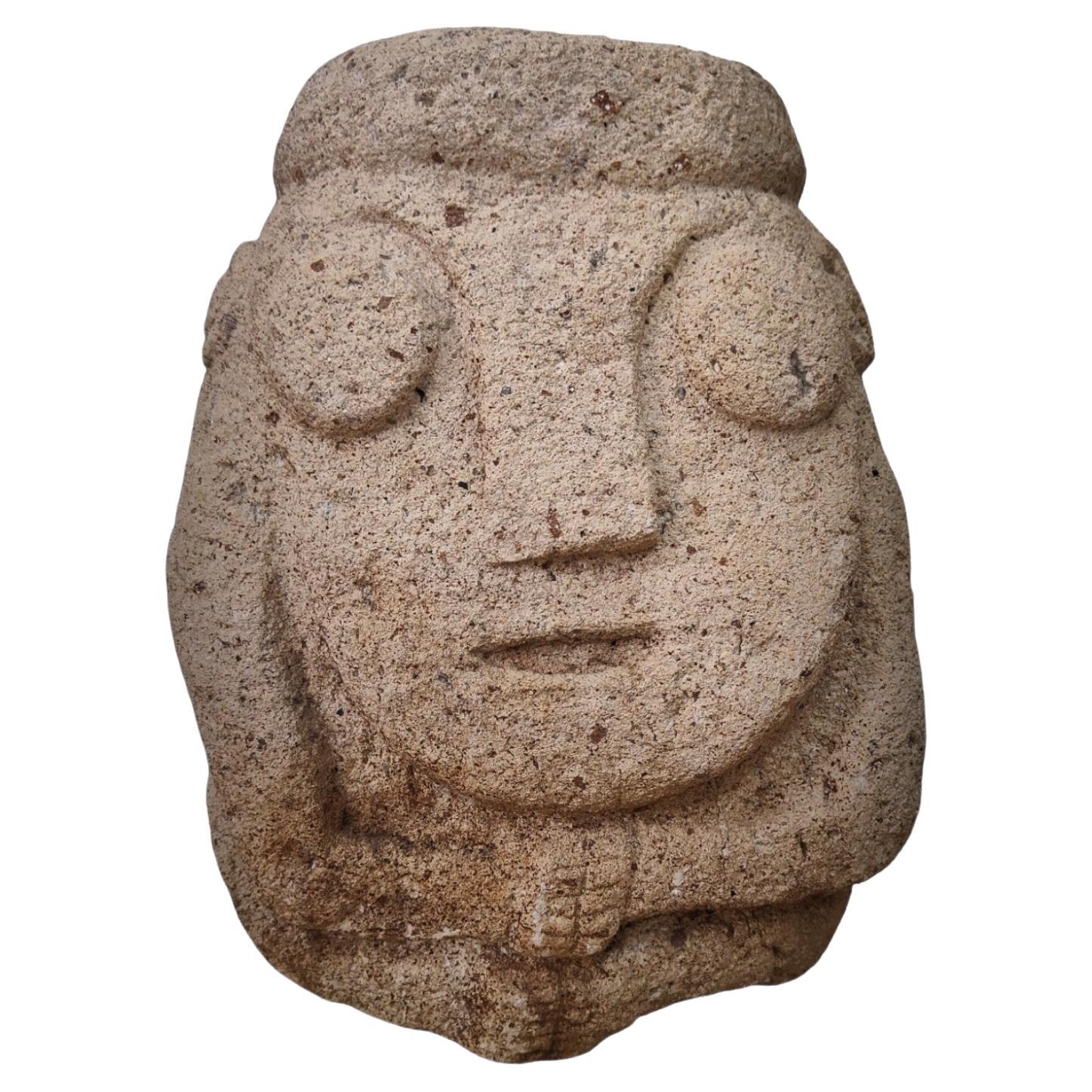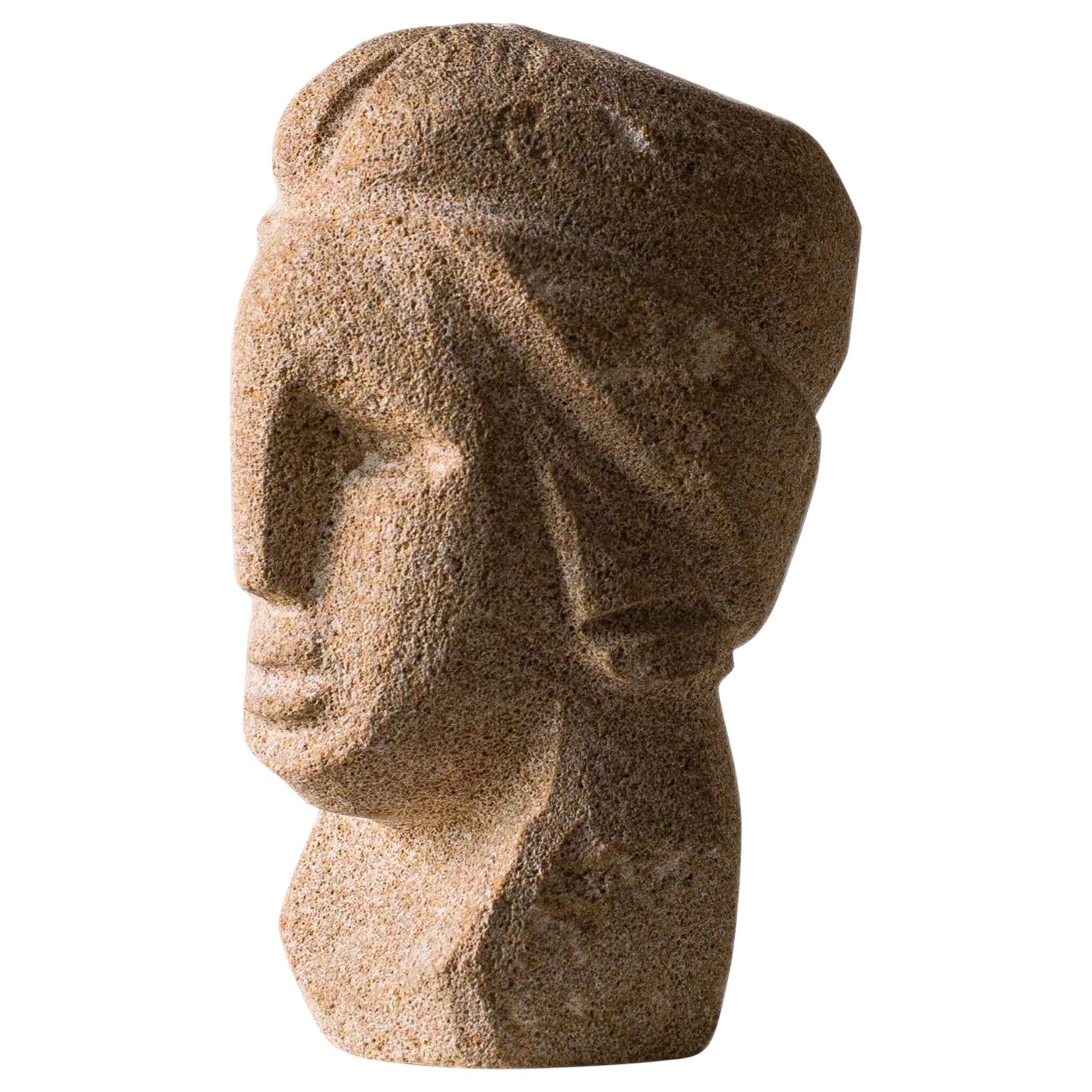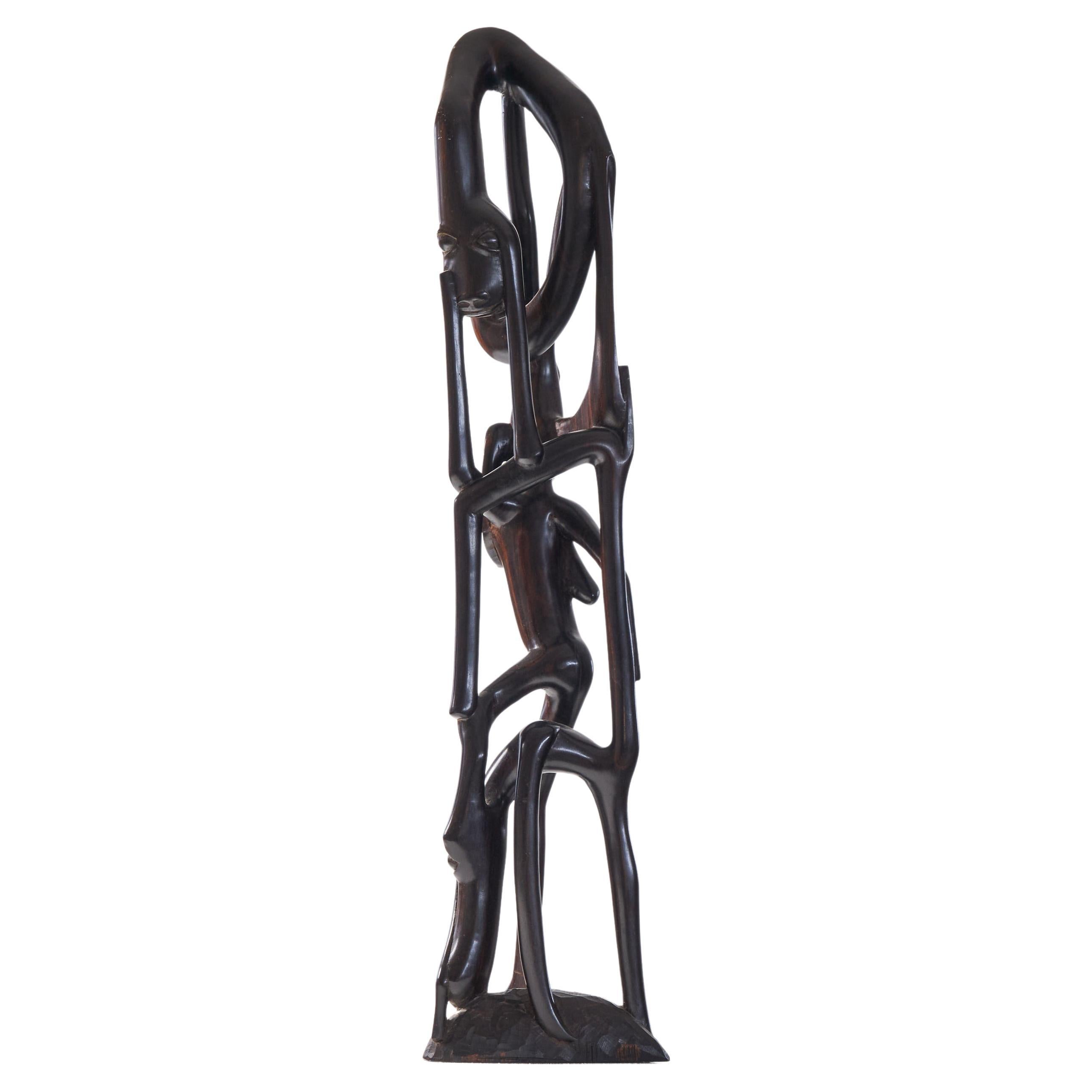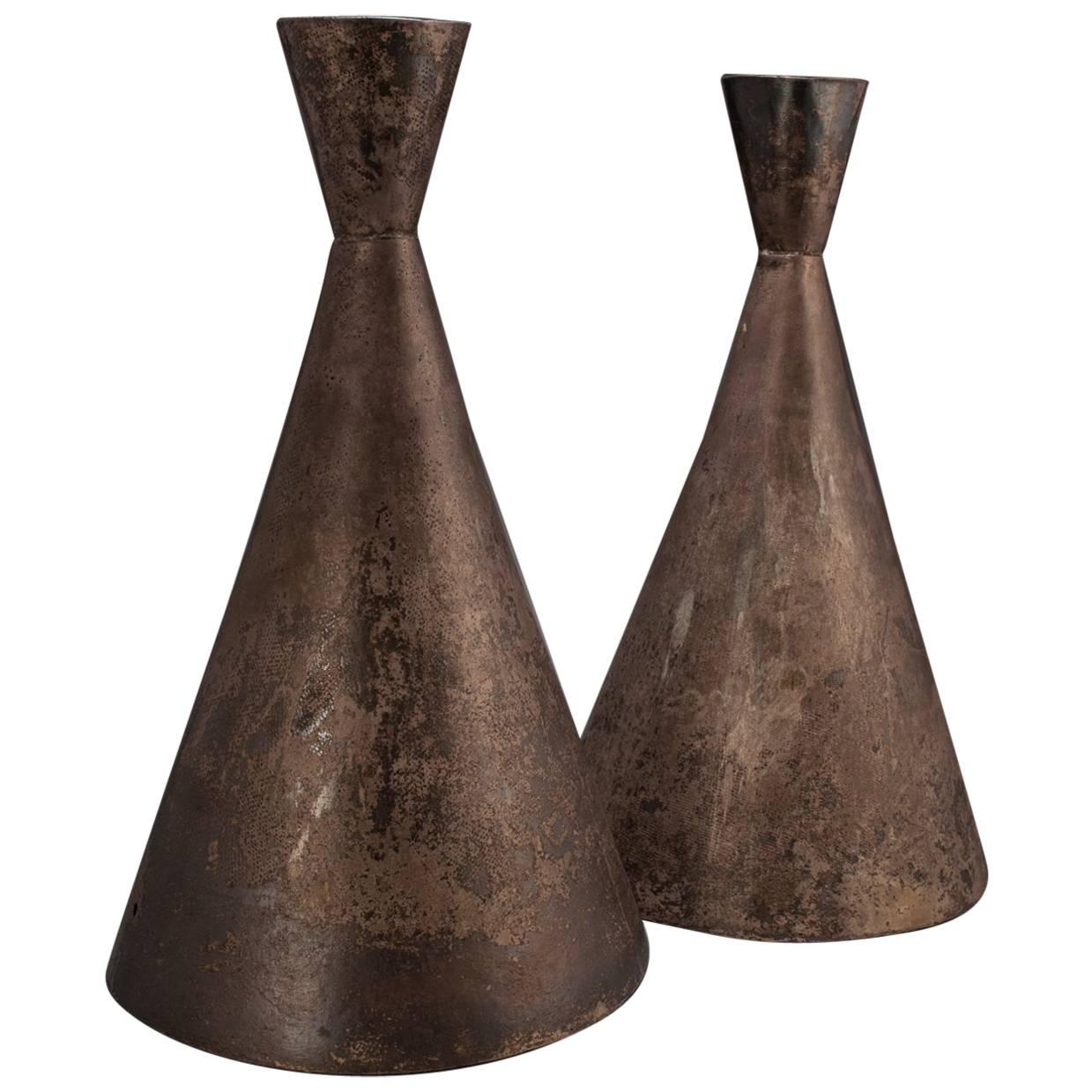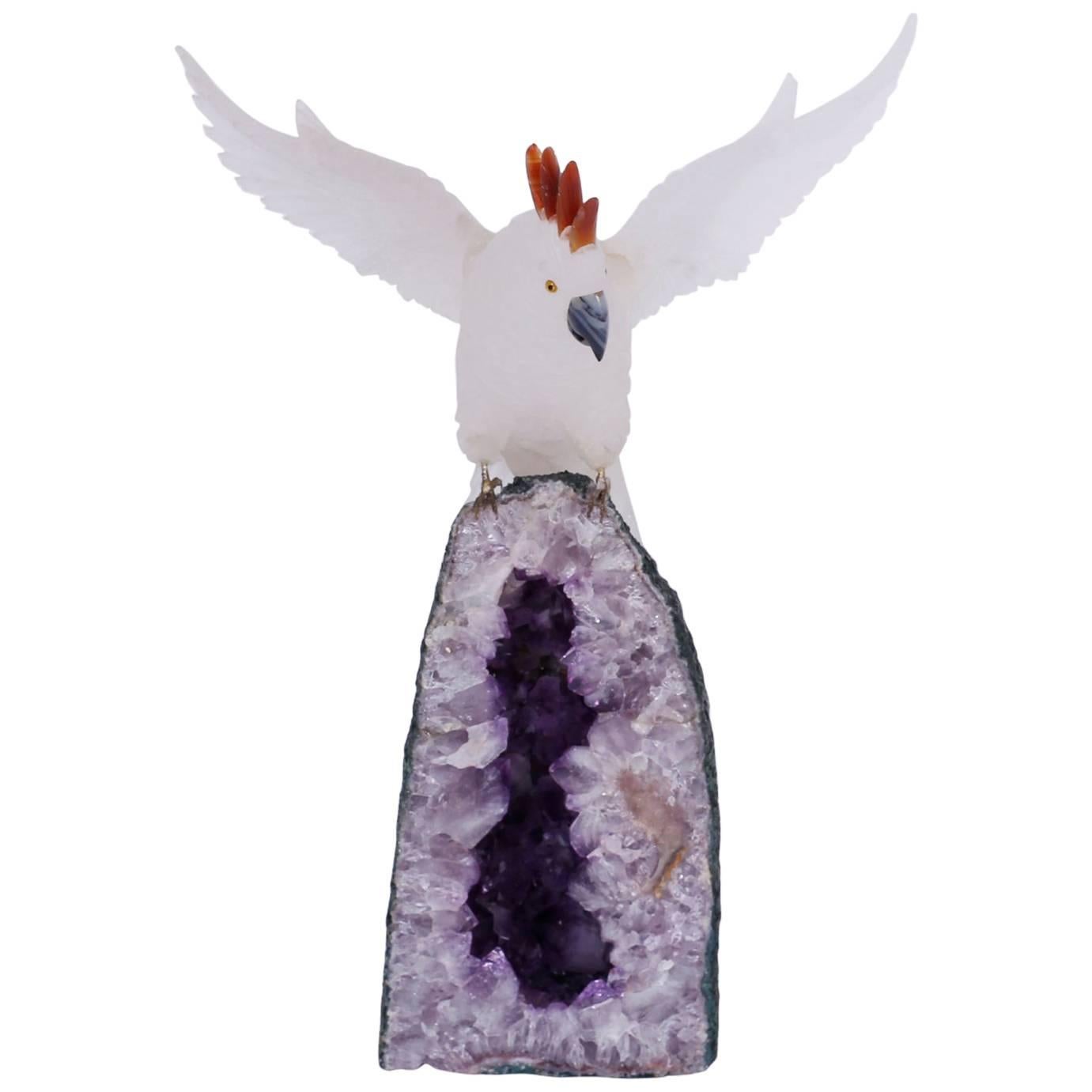Items Similar to Stone Carved Anthropomorphic Sculptures Recuay Culture Ancash highlands, Peru
Want more images or videos?
Request additional images or videos from the seller
Stone Carved Anthropomorphic Sculptures Recuay Culture Ancash highlands, Peru
About the Item
LOT OF TWO Stone Carved
Anthropomorphic Sculptures
Recuay Culture
Ancash highlands,
Peru age unknown.
Carved in round in high relief,
anthropomorphic representations
of seated male figures with crossed legs
and hands on the knees.
Mounted on wood stands.
Height of the first statue: approx. 5 1/2" x 3 1/2" in. (14 x 9 cm.) with stand, 9 1/4" in.(23.5)
Height of the second statue: approx. 5 3/4" x 3 1/2" x 2 1/4" in.(14.5 x 9 x 5.7 cm.) with stand: 9 3/8 in.(23.7)
- Dimensions:Height: 9.38 in (23.83 cm)Width: 5.75 in (14.61 cm)Depth: 3.5 in (8.89 cm)
- Style:Primitive (Of the Period)
- Materials and Techniques:
- Place of Origin:
- Period:
- Date of Manufacture:Unknown
- Condition:Wear consistent with age and use.
- Seller Location:Ottawa, CA
- Reference Number:1stDibs: LU1417235779282
About the Seller
5.0
Gold Seller
These expertly vetted sellers are highly rated and consistently exceed customer expectations.
Established in 1989
1stDibs seller since 2015
414 sales on 1stDibs
Typical response time: 2 hours
- ShippingRetrieving quote...Ships From: Ottawa, Canada
- Return PolicyA return for this item may be initiated within 7 days of delivery.
More From This SellerView All
- Shona Head Sculpture Carved Stone Kumberai Mapanda, circa 1970Located in Ottawa, OntarioKumberai Mapanda (1940-) Small head. circa 1970. Carved serpentine stone 5 1/4" in. (13.4 cm.) high, excluding base. Shona sculpture is the name given to a modern move...Category
Late 20th Century Zimbabwean Modern Figurative Sculptures
MaterialsStone
- Pair of Yoruba Culture Ibeji 'Nigeria' StatuesLocated in Ottawa, OntarioA pair of Yoruba Culture Ibeji (Nigeria) statues, a male and female carved figural statues with exaggerated features. Both figures have elongate...Category
Antique Late 19th Century Nigerian Tribal Figurative Sculptures
MaterialsWood
- Inuit Soapstone Sculpture of a Face Wrapped in a Parka HoodLocated in Ottawa, OntarioInuit soapstone sculpture of a face wrapped in a parka hood, the head is carved, so it appears to be movable or separate from the parka hood....Category
Mid-20th Century Canadian Native American Figurative Sculptures
MaterialsSoapstone
- Bronzed Sculpture of a Palm Tree and Gazelle on a Rock BaseLocated in Ottawa, OntarioA bronzed palm tree and Gazelle on a rock base sculpture, Marked T. T.W. on the side of the base. Nice patina and size. The sculpture measures 10" inches hig...Category
Late 20th Century American Mid-Century Modern Animal Sculptures
MaterialsBronze, Metal
- Pr. of Soapstone Sculptures Inuit Birds Signed Syllabics E Number for Carver ID.Located in Ottawa, OntarioPair of soapstone Inuit birds signed in Syllabics and E numbered for Carver ID. Both are carved in black colored soapstone, the bird with his beak down meas...Category
Mid-20th Century Canadian Other Animal Sculptures
MaterialsSoapstone
- French Terracotta Sculpture, 20th Century by Louis Auguste Joseph BertrandBy Louis Auguste Joseph BertrandLocated in Ottawa, OntarioA Louis Auguste Joseph Bertrand, French terracotta sculpture of a baby holding a question mark symbol, Titled "Le Point d'interrogation" signed "Louis Bertrand" and dated "3. 1931" T...Category
Mid-20th Century French Beaux Arts Figurative Sculptures
MaterialsTerracotta
You May Also Like
- Stone Carved Anthropomorphic Sculpture From The Recuay Culture Peru 400bc-400acLocated in Madrid, ESANTHROPOMORPHIC SCULPTURE CARVED IN STONE OF THE RECUAY CULTURE PERU 400BC-400AC Recuay is an archaeological culture of Ancient Peru that developed in the Sierra of the current Peruvian department of Áncash between 200 AD. C. until 600 d. C. It corresponds to the stage called Regional Developments, it has also been called the Huaylas or Santa culture. Like the other Early Intermediate cultures, little is known about this culture. The most accepted position is that it was an extension of the Chavin culture, after the influence of the "White on Red" style in the region. Regarding the political aspect of the recuay, there is a hypothesis that questions their autonomy and maintains that Recuay would be part of one of the many political units that made up the Moche state. The recuay style, characterized by its ceramics and stone sculpture, was initially described by Eduard Seler in 1893, based on ceramic specimens brought to the Ethnographic Museum in Berlin by Mariano M. Macedo. Seler named this style of pottery Recuay, based on the report that these pieces had been found in the town of Recuay. Later studies showed that this characteristic pottery was not originally from Recuay but from Copa, near Carhuaz, for which reason the name change to that of this town was proposed. Eventually the name of Huaylas was used for this culture. In 1919 Julio C. Tello explored the area and recovered lithic sculptures and Recuay-type ceramics. In the 1960s Rafael Larco Hoyle proposed changing the names of Recuay and Copa to Santa, arguing that the Recuay style had originated in the coastal regions of the Santa Valley. However, the name Recuay has persisted. Its chronology is also highly debatable. The time of its origin between 0 and 200 AD is discussed. C. and its end or collapse is commonly set to 600 d. C. probably caused by the invasion of the Huari conquerors. It encompassed almost the entire Callejón de Huaylas, a narrow valley fed by the Santa River and enclosed between two mountain ranges, the Cordillera Blanca to the west and the Cordillera Negra to the east. Its influence extended to the east to the Marañón river basin and to the west to the upper parts of the Santa, Casma and Huarmey valleys. To the north it reached the town of Pashash, in the province of Pallasca. The Copa area, Marca district, Recuay province, Ancash department seems to have been the center or main nucleus of cohesion of this culture. The name of the culture would then be justified, derived from the province of the same name. Other important settlements were those of Huilcahuaín (near the current city of Ancash), Cátac, Araucay, Tambo, Jancu, Upayacu and Pashash (near the current city of Cabana). Its main form of expression of art was through stone work (carving and masonry), inherited from its predecessor, the Chavín culture. In addition, they made sculptures in lumps that represent warriors with shields or trophy heads, with which they decorated their complex architectural constructions. They also made white clay pottery...Category
Antique 15th Century and Earlier Figurative Sculptures
MaterialsStone
- Green Fluorite with Pyrite from Huallapon Mine, Pasto Bueno, Ancash, PeruLocated in New York, NYFrom Huallapon Mine, Pasto Bueno, Ancash, Peru. This product features lustrous, transparent green fluorite crystals, complemented by the yellow-metallic pyrite crystals, brown limon...Category
21st Century and Contemporary Peruvian Natural Specimens
MaterialsCrystal, Rock Crystal
- Carved Stone Head Sculpture french work 1970'sLocated in ROUEN, FRLimestone sculpture of an enigmatic and highly elegant face, intricately carved, France, Circa 1970. The facial features, appearing masculine, emerge from the stone through lines tha...Category
Mid-20th Century French Primitive Figurative Sculptures
MaterialsLimestone
- Anthropomorphic Modernist 'Makonde' Sculpture 1950sLocated in Tilburg, NLAnthropomorphic Modernist 'Makonde' sculpture 1950s This is a wonderful piece of modernist African art. It is a so called 'Makonde' sculpture. These unique pieces are crafted by t...Category
Mid-20th Century Tanzanian Brutalist Abstract Sculptures
MaterialsWood, Ebony
- 9th Century Silver Processional Priest's Hats, Chimu Culture, PeruLocated in Point Richmond, CA9th century silver processional priest's hats, Chimu culture, Peru. These silver hats were originally covered with fabric, as can be seen in the remaining surface pattern. The hol...Category
Antique 15th Century and Earlier Peruvian Tribal Abstract Sculptures
MaterialsSilver
- Carved Stone Cockatoo SculptureLocated in Palm Beach, FLCarved stone cockatoo sculpture caught in the action of landing on an amethyst geode. Featuring a lofty combination of colors and textures with an unlikely life-like attention to det...Category
20th Century Brazilian Folk Art Animal Sculptures
MaterialsCrystal
Recently Viewed
View AllMore Ways To Browse
Shield Of Achilles
Antinous Osiris
Goldscheider Clown
Jonathan Adler Hippo
French Sculpture Pair
Patinated Bronze Green
Statue Of A Saint France
Female Bronze Nude Goddess
Shelf Sculpture
Cloak Stand
Antique Pewter Goblet
Auguste Moreau On Sale
Belle Epoque By Rousseau
Fisher Austin Productions
Furietti Centaurs
Hugo Lonitz Majolica
Lu Xing
Majolica Lonitz
